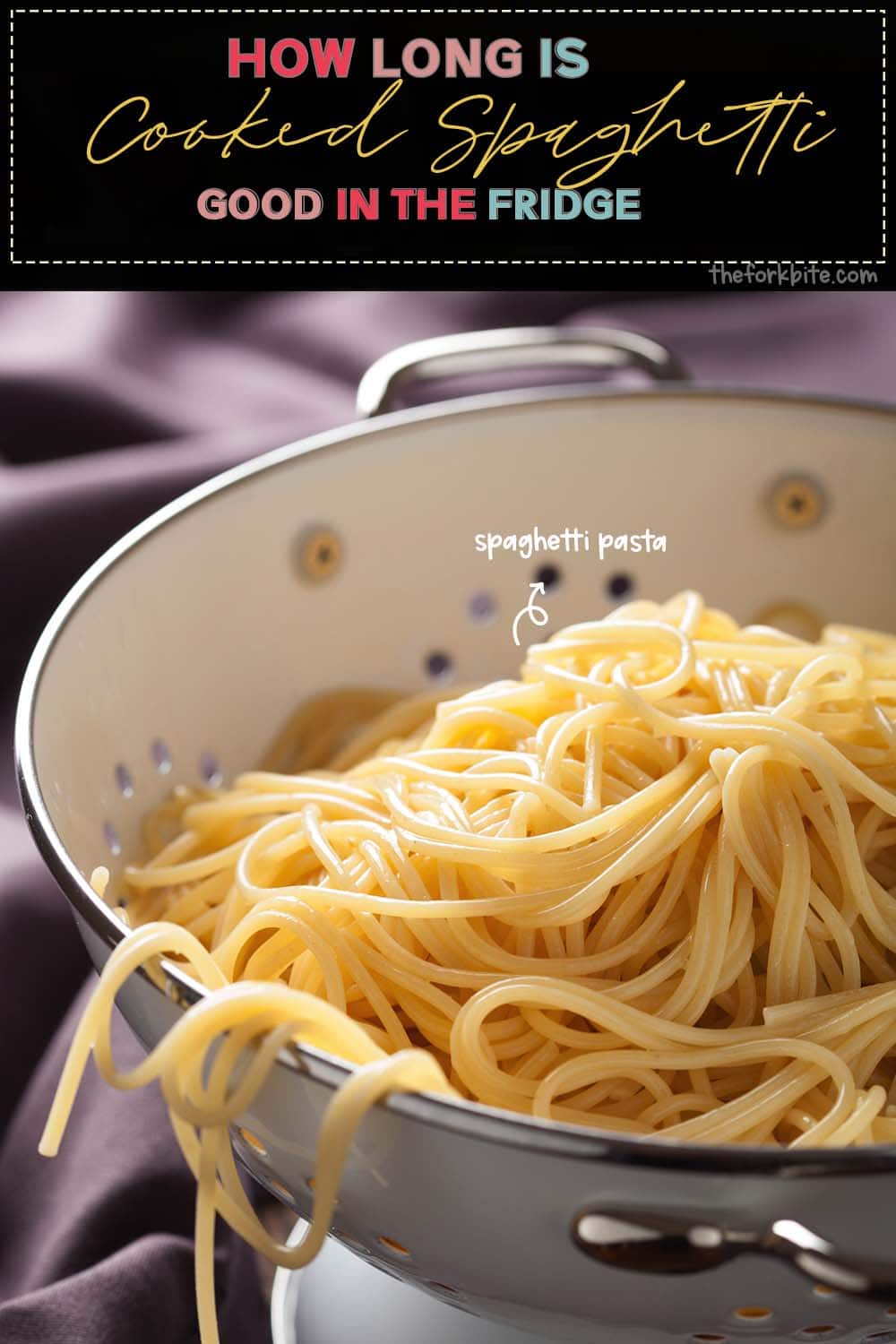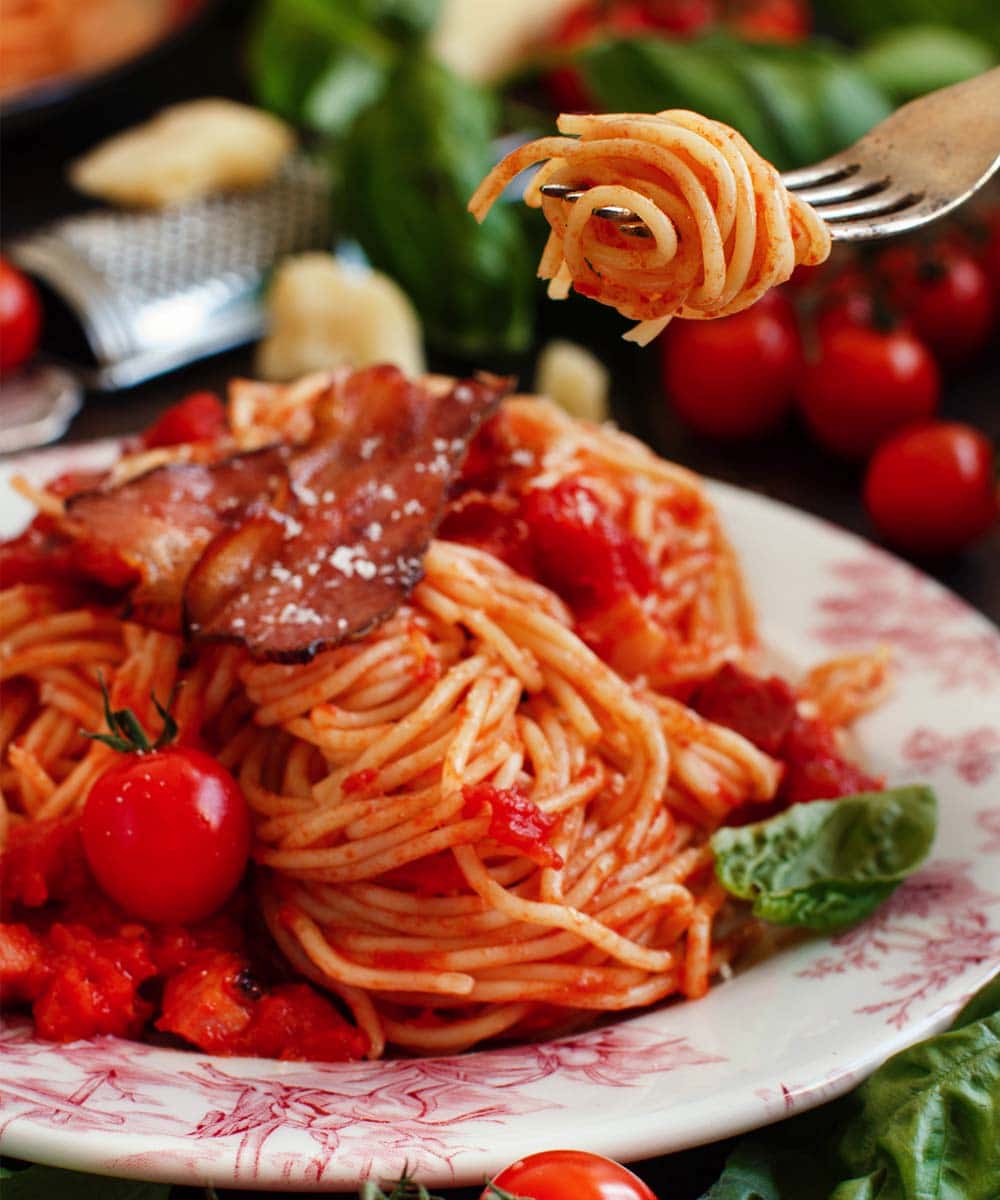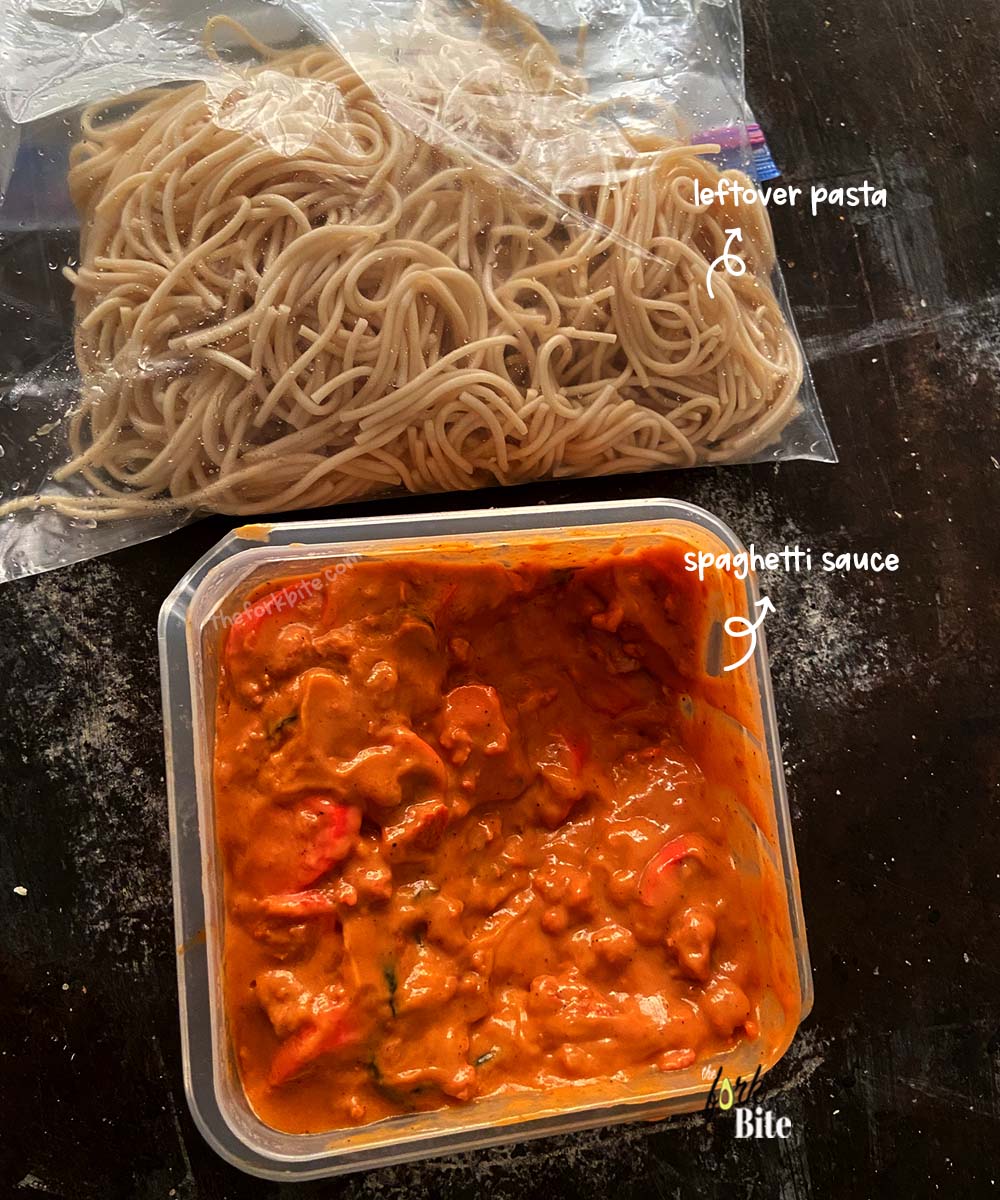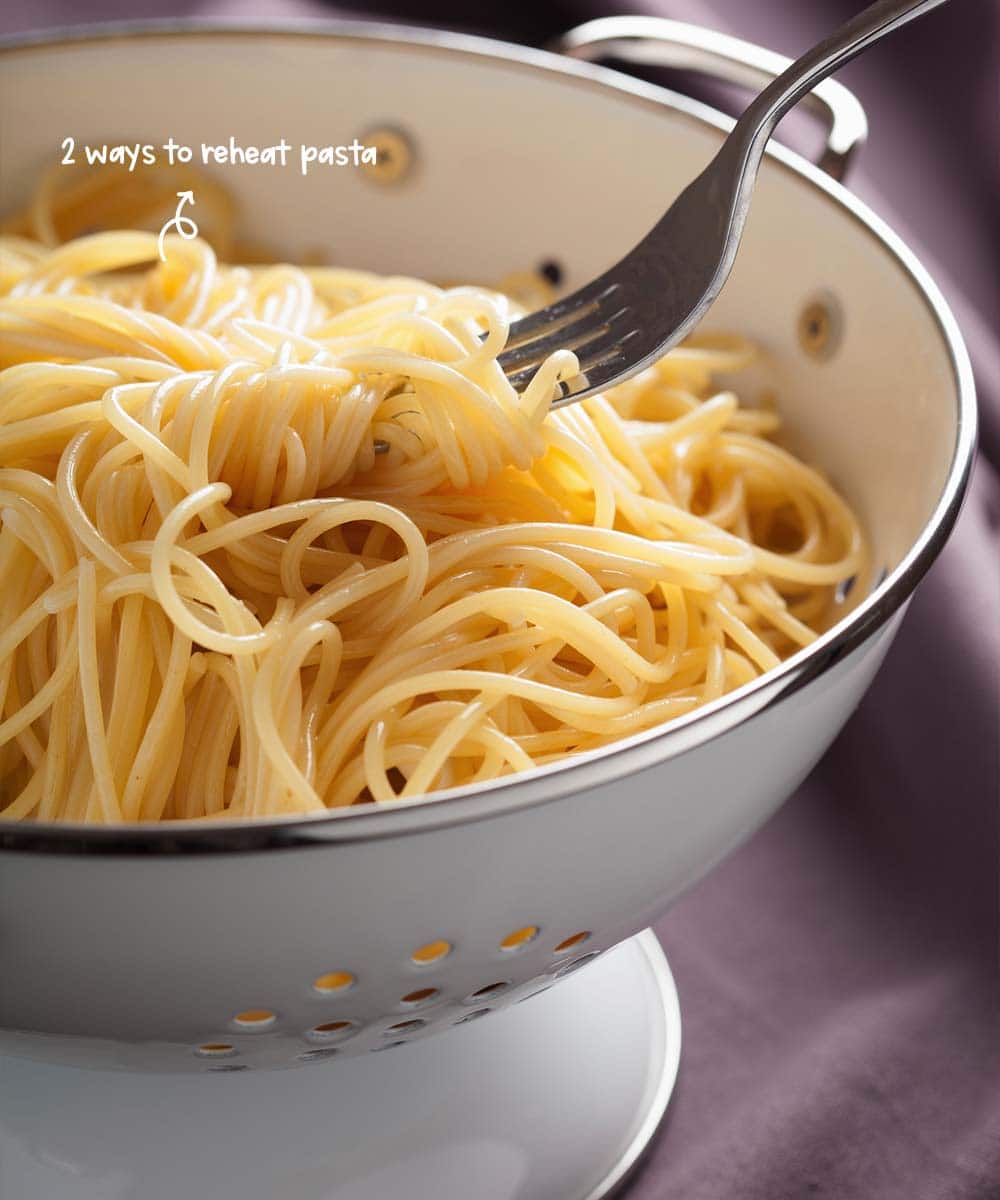Whenever I make spaghetti, I always end up with a serving bowl full of noodles. In my mind, it is still good to have excess food than have a shortage of it. Being short on pasta noodles happened to me one time, and my guests waited for what seemed to be the longest ten minutes of my life. So I do my best to avoid that scenario from happening again.
With leftover pasta noodles frequently in my fridge, I became tired of playing the guessing game. I've researched what I could about the proper storage of pasta. I also made sure I took note of the storage times as well. I know I have made a bunch of mistakes in storing pasta. With this article, I hope to share my knowledge with you to prevent making the mistakes I made.
Jump to:
Storing the leftovers isn't smart.
Pasta dishes are meant for sharing. When you want to serve a spaghetti dinner to your guests or your family, you always think about whether you've made the right amount. You want your family or guests to finish their pasta meal in a perfect pasta dinner without anything left.
Yet, this rarely happens. It is common for you to have a lot of noodles left. To avoid waste, you try your best to store it in your fridge and serve it later.
Experts say that you should give your neighbors the leftover pasta. Pasta doesn't taste the same when you reheat it. If you give your neighbors plates of your pasta dish instead, you avoid problems when you serve the noodle dish a second time. You also become a good neighbor.
Yet, if you still want to keep leftover pasta in your fridge, please keep reading.
How long can you keep spaghetti in the fridge?
Answer: Three days is the maximum storage period for a pasta dish that has a meaty sauce. Those that don't have that much meat can stay in the fridge for a maximum of four days. Pasta that remains in the refrigerator even an hour longer than the maximum period can spoil and may be bad for your health.
Here are excellent tips:
-
- It is best not to mix your sauce into the noodles before you serve.
- It would help if you kept the sauce and the noodles in separate containers. The longevity of the pasta dish may be affected by the blending of these two components.
- The pasta noodles will stay good longer in the fridge if you store it separately from the sauce.
- When you're done with the main meal, but you still plan to eat your pasta dish in the next two to three hours, you can keep your pasta and the sauce standing in separate pots on the stove.
- If you plan on keeping all the food already, then take the leftovers and place them in separate containers.
- It would be best if you then placed them in your fridge immediately. Pasta can only stay fresh for up to three hours. Beyond this time, the quality of the noodles will degrade right away. It is highly likely that it could spoil in two more hours.
- Take note that if you refrigerate the pasta as soon as possible, you could preserve the dish longer. So, if you're sure that no one wants to eat anymore, refrigerate your pasta dish immediately.
- Look at your sauce as well. If you have a sour sauce, it can stay fresh longer. For a sauce with mayonnaise, cream, or milk as its base, expect it to have a shorter shelf life.
- You should also know your fridge because it has different levels of cold temperatures for specific foods. I have discovered that the upper shelves are ideal for storing pasta dishes. Air circulation and temperature inside the fridge don't agree all that much with cooked foods.
- Avoid placing your leftover pasta in your fridge drawers. It is possibly the worst part of keeping delicate foods.
Best way to store spaghetti for reuse
-
- Always consider air and moisture when storing your pasta.
- Make sure you place your pasta in airtight food containers. If you made a huge batch, separate them equally. Keeping them in smaller sealed containers will help them repel moisture and allow them to cool more quickly.
- The next best type of container you can get is a sealable bag like Ziploc bags. With these bags, you can push out the air and preserve the dish longer.
Here are extra tips:
-
- Coat the pasta noodles with olive oil before storing them in the fridge. Doing this will help the pasta strands to keep separate while they stay in cold storage.
- Please do this before placing the noodles in sealable bags or airtight food containers, making them last longer.
- You can shake the pasta noodles and olive oil together in your sealable bag to coat each strand evenly.
- Do not store warm pasta in your fridge. It is best to allow them to cool down for at least half an hour before packing for storing in the refrigerator.
Here's the deal:
It is inevitable for pasts to spoil after four to five days, even if you protect or store it correctly in your fridge.
To be sure that your pasta noodles will keep longer than just five days, you should go extreme and use your freezer.
In a frozen environment, your pasta can keep longer, especially with a temperature of below zero degrees Fahrenheit. Just don't freeze it longer than eight weeks. Check your freezer occasionally to see if you have cooked food like pasta in there.
Reheating your refrigerated spaghetti pasta
After days of refrigerating your pasta, you decide to remove the noodles from their cold storage finally. The first thing you need to do is reheat them.
If you have packed and stored them properly, you will unveil pasta still in good condition. There is nothing like enjoying your spaghetti-like it was freshly made.
It took time for me to discover the most efficient and effective ways to reheat refrigerated pasta. With kids asking for them a day after it was initially served, I had to make sure they eat the same delicious pasta dish.
If you want to reheat pasta noodles, you can use your microwave or some boiling water.
1st option: Boiling water
I like this first option because pasta loses part of its moisture when exposed to a cold environment. They will also be mushy and bland.
Here are some of the tips for reheating pasta in boiling water:
-
- Place your noodles in boiling water that has a little salt in it.
- Let them sit in the boiling water for about 30 seconds and pour everything into a colander.
- Half a minute is enough to bring back their warmth, texture, and flavor.
2nd option: Microwave
It is easier and faster to reheat your frozen pasta in the microwave. Even so, keep in mind that the reheated noodles will be of lower quality than reheating them in boiling water.
-
- Sprinkle water on our noodles to give them moisture that they lost.
- Stir them as vigorously as you can before reheating.
- Set your microwave to reheat the noodles for a minute and thirty seconds.
How about the frozen spaghetti pasta?
There are two methods in thawing frozen pasta:
-
- Room temperature process (natural and slow)
- Microwave process (Quick and invasive)
I always use the natural method. Whenever you use your microwave in thawing pasta, the heat will thaw the noodles too quickly. They will kill most of the nutrients during thawing. The resulting strands will be tasteless and mushy.
Setting the frozen pasta up for thawing at room temperature is slower, but it will not destroy the food on a microscopic level. This method will only give you tasty and nutritious thawed pasta.
Remember: This is for noodles without meat or sauce.
Reheating the noodle dish that you removed from the fridge is doable with a microwave. Just make sure that you do not reheat for too long. Keep the process short and set the microwave to the lowest heat setting.
Below is a simple method to reheat your pasta dishes in the microwave:
-
- One minute on the lowest setting
- Stir vigorously
- One minute on the lowest setting
- Stir vigorously
- Optional step: Repeat the steps
The following are the main takeaways from my post:
-
- Don't have leftovers, if at all possible. Separate your sauce from your pasta noodles. Only combine them when they're reheated and ready to serve.
- Refrigerate your noodles immediately after the meal.
- Dispose of your pasta noodles if they have been in the fridge for more than four days. If you know that you won't have pasta again soon, place them in sealable bags or airtight food containers and freeze them.
- Always have airtight food containers or Ziploc bags on hand.
- Check your freezer and fridge occasionally if you know there is spaghetti in there.








